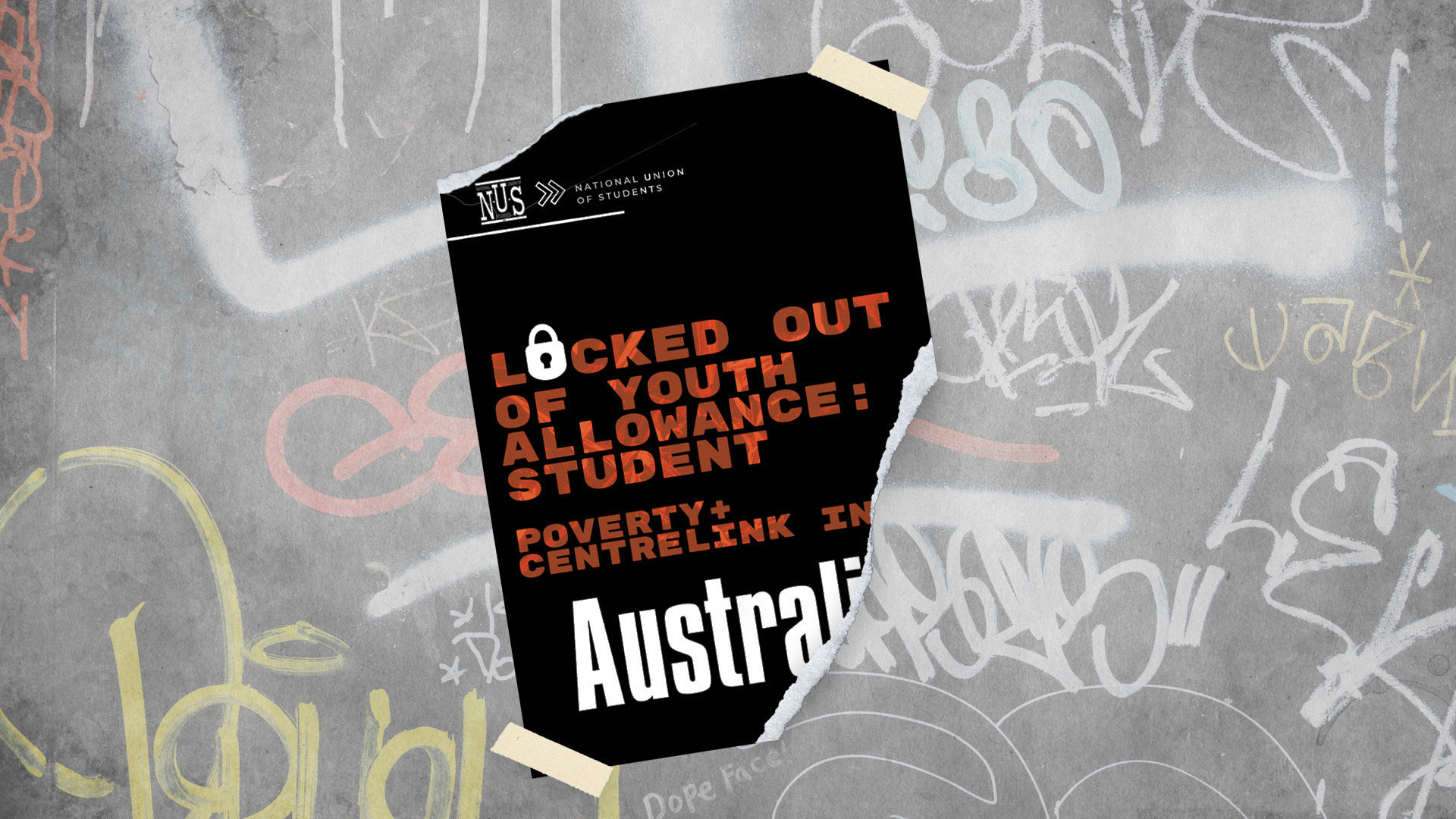According to ‘Locked out of Youth Allowance: Student poverty + Centrelink in Australia,’ over 450,000 students aged between 18-21 can’t access Youth Allowance payments due to Centrelink’s Age of Independence being set at 22.
Meanwhile, those who can access the payments are still paid $273 below the poverty line each week.
So what makes you independent?
Young adults under the age of 22 who wish to have full access to the payment, must prove themselves to be independent from their parents’ income and assets. According to Centrelink, applicants must meet one of the following criteria to be eligible:
Are in a situation where it is unreasonable for them to live at home
Have parents who can’t look after them
Are in state care, including foster care
Are a refugee whose parents don’t live in Australia
Are an orphan
Are in “certain education or employment circumstances”
The last criteria requires applicants to have worked for at least 30 hours per week for 12 months, not be living at home, and not be getting direct or indirect financial support from parents.
Applicants who cannot prove their “independence”, are considered by Centrelink to be dependent on their parents income. Their final opportunity to obtain dependent youth allowance is to undergo both a parental means test and a personal income test. If they and their parents earn more than $56,137 combined, their payments are reduced by 20 cents for every dollar over this amount, according to Centrelink’s parental income test.
To clarify, an applicant who makes only $10,000 in a year, whose single mother makes only $50,000, won’t be eligible for dependent youth allowance because they earn a combined $60,000.
So what’s the issue?
According to National Union of Students President Georgie Beatty: “[Centrelink] sees you as dependent on your parents, and that they assume that your parents are giving you a little cash in your hand, which we know isn't true for the majority of students.”
“That is the massive flaw in the system. Even if your parents are eligible, and most of the time they aren't eligible, then you've got to go through these ridiculously traumatising processes to try and gain independence.”
The NUS report shows that the barriers to the Youth Allowance have significantly impacted student’s financial wellbeing, mental health and experience of their education. Queer students and students who have experienced domestic violence have been hit hardest by these barriers. According to Beatty, the lack of financial aid exacerbates these students’ vulnerable situations.
“What we found was that there are a lot of students who, as a result of being part of the LGBTQIA+ community, had faced discrimination at home, been kicked out of home, were afraid of their parents, and who then had to come crawling back with forms so that they were then able to access Youth Allowance,” Ms Beatty says.
Additional flaws in Centrelink’s system include the fact that Youth Allowance is not valued against rising costs of living. Even Commonwealth Rent Assistance payments do not match the realities of renting in Australia. According to Anglicare Australia, 0% of rental properties were affordable for young people on Youth Allowance.
And the solution?
Beatty would like to see Youth Allowance measured by the Consumer Price Index (CPI), an indicator of inflation and the price of living in the current economy.
“You can't really be a student at the moment unless you have a laptop and all these other things which are expensive. When you come from a low economic, low socio-economic background, all of these add extra barriers,” she says. “What we’re seeing is full time university education is a luxury that many students can't afford.”
The report concludes by recommending that the Australian government lower the Centrelink Age of Independence from 22 to 18, lift Youth Allowance payments to above the poverty line, adjust Youth Allowance with the cost of living, and update rent assistance payments in line with market rents.


 -
-